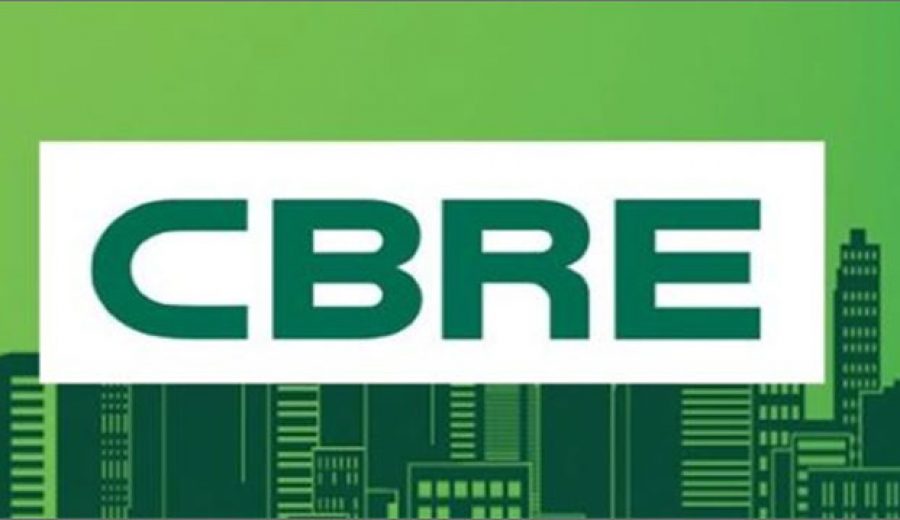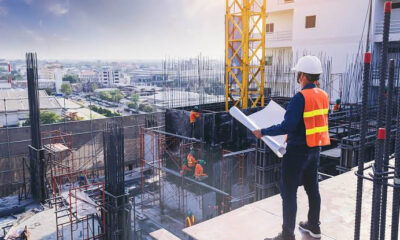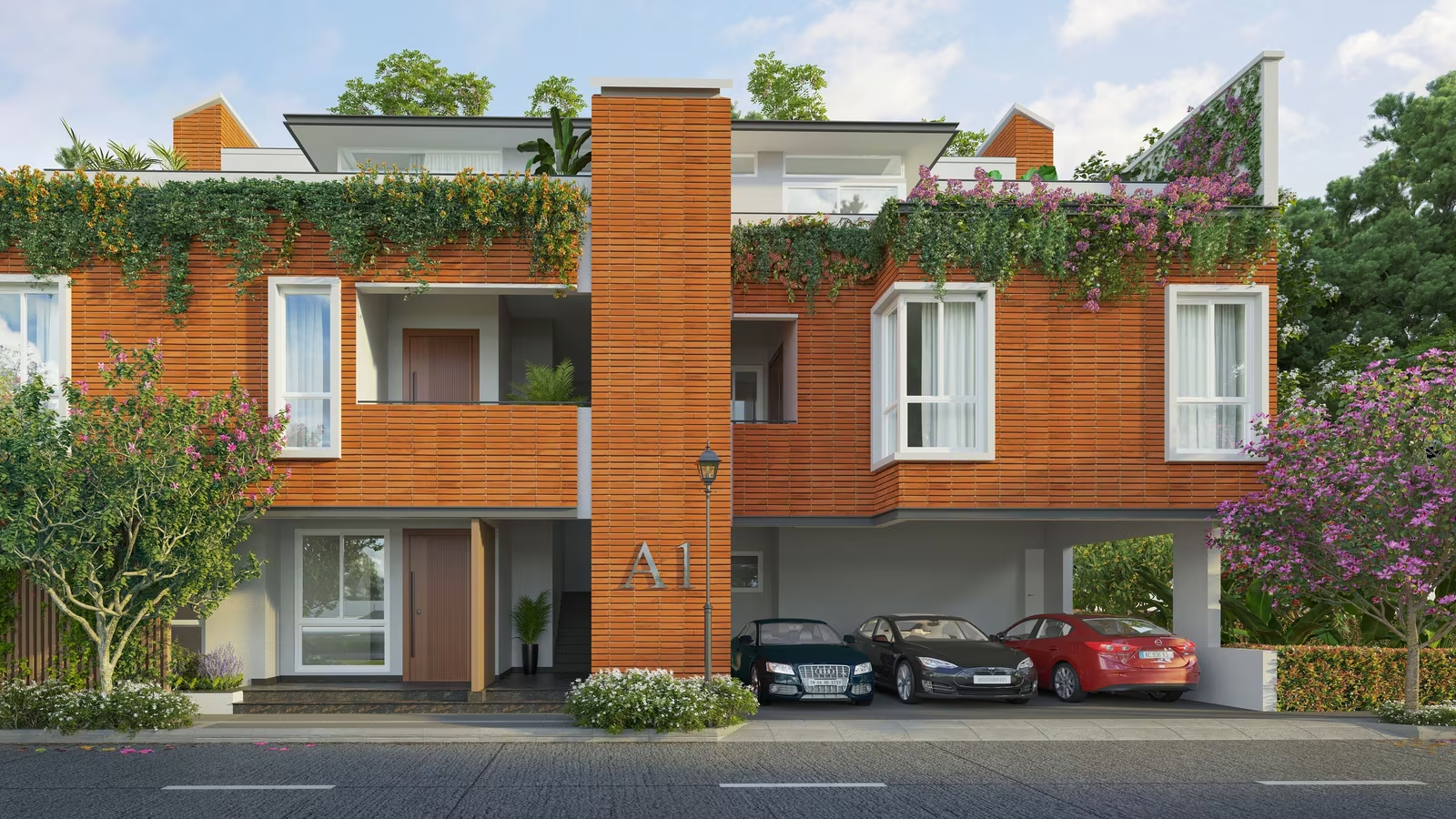News
Industrial & Logistics sector leasing up 26% Y-o-Y to 8.0 mn. sq. ft. in Jan-Mar’23


April 26, 2023: CBRE South Asia Pvt. Ltd., on Wednesday announced the findings of its report, ‘India Market Monitor Q1 2023’. The report highlights the growth, trends, and dynamics across various segments of the real estate sector in India. According to the report, Industrial & Logistics (I&L) sector leasing grew by 26% Y-o-Y to 8.0 mn sq. ft. in Jan-Mar’23. Supply during this period increased by 28% Y-o-Y to 7.6 mn sq. ft.
During the Jan-Mar’23 period, Delhi-NCR drove absorption activity, with the leasing of ~1.7 mn sq. ft., followed by Hyderabad at ~1.5 mn sq. ft. and Ahmedabad at ~1.2 mn sq. ft. The leasing share of these three cities in total leasing stood at 54%. The collective share of Chennai, Kolkata and Hyderabad in supply addition stood at 59% in Jan-Mar’23.
According to the report, 3PL had a majority share in leasing at 43%, while e-commerce firms’ share improved and stood at 15% during the Jan-Mar’23 period. Retail and Engineering & Manufacturing firms accounted for a share of 11% each in leasing, followed by Auto & Ancillary corporates at 8%. Overall, domestic firms had a 61% share in leasing, while American corporations held a share of about 17%.


Anshuman Magazine, Chairman & CEO – India, South-East Asia, Middle East & Africa, CBRE, said, “We anticipate that leasing momentum in the I&L space in 2023 will continue to be strong, with a demand of 32–35 mn. sq. ft. and would grow by 1–5% on an annual basis. Despite macroeconomic uncertainties, the I&L sector saw robust growth in the first quarter of 2023. We anticipate supply to grow by 15–24% Y-o-Y to reach 24-26 mn. sq. ft. following the release of pent-up supply. We also foresee increased demand from FMCG, retail, and electronics & electricals sectors, while 3PL and engineering & manufacturing firms would continue to be key drivers of the leasing momentum this year.”


Ram Chandnani, Managing Director, Advisory & Transactions Services, CBRE India, said, “We anticipate that rising occupier demand for improved warehousing spaces and storage efficiency would translate into a growing need for superior warehousing facilities. Moreover, occupiers’ desire to achieve operational efficiency and reduce costs in a multi-user facility is projected to boost demand for large-sized spaces (more than 100,000 sq. ft.).”
I&L Market Outlook:
- Sustained demand for I&L spaces likely in 2023.
- Leasing activity to range between 32-35 million sq. ft. with an annual growth rate of about 1-5%
- Supply to grow by 15-24% Y-o-Y to touch 24-26 million sq. ft. owing to the completion of pent-up supply
- 3PL and engineering & manufacturing companies to continue to drive I&L space take-up
- Heightened interest from FMCG, retail and electronics & electricals firms likely
- E-commerce leasing to improve gradually over the year
- Rising requirements of occupiers to enhance warehousing spaces and improve storage efficiencies likely to boost the need for quality warehousing facilities
- Occupiers’ quest to achieve operational efficiencies and rationalize costs in a multi-user facility likely to give a spurt to the take-up of large-sized spaces (more than 100,000 sq. ft.)
- Occupiers to prioritize prime locations, but a lack of ready-to-move-in supply would cause a shift in focus toward secondary locations, enabling them to leverage comparatively low rentals
Other sector observations
Office: Sustained absorption activity witnessed at the start of the yearAbsorption recorded at 12.6 million sq. ft in Q1 2023; 9% Y-o-Y growth in leasing 11.6 million sq. ft. supply was recorded in Q1 2023; 31% Y-o-Y jump in supply was witnessed62% Cumulative share of Bangalore, Delhi-NCR and Chennai in leasing activity in Q1 202382% Combined share of Bangalore, Delhi-NCR, Pune and Hyderabad in supply addition in Q1 2023BFSI (22%) and Flexible Space Operators (22%) drove leasing activity in Q1 2023Domestic corporates led the leasing activity in Q1 2023 with a 48% share
Outlook:Current short-term macro-economic uncertainty might put downward pressure on absorption although we believe space take-up activity would pick up pace in the second half of the year as India remains an attractive cost-effective destination and source of highly skilled talentWhile technology corporates would remain a driver of leasing activity, sectoral drivers to become more broad-based due to sustained leasing by BFSI firms, flexible space operators, and engineering & manufacturing companies; moreover, GCCs would also continue to contribute to growth in the medium to long termRobust pipeline of quality assets to ensure steady pace of building completions; yet, vacancy rates to remain range bound due to sustained leasing activityFlight-to-quality leasing sentiments of occupiers would ensure continued interest in investment-grade buildings by leading developers and institutional owners in core locationsThe intense focus on RTO planning and hybrid working would continue to lead to growing significance of workplace strategies in corporate agendas; the need for productive interactions with relevant co-workers could cause occupiers to revisit workplace design standardsRetail: Strong space take-up witnessed in Q1 2023; further strengthening anticipated despite impact of global headwinds on discretionary spendingAbsorption recorded 1.5 million sq. ft in Q1 2023; 130% Y-o-Y growth in leasing activity1.1 million sq. ft supply was recorded in Q1 2023; 474% Y-o-Y growth in supply81% Cumulative share of Ahmedabad, Delhi-NCR, Bangalore and Chennai in leasing activity in Q1 20234% Q-o-Q fall in space take up in Q1 202373% Share of Ahmedabad in supply addition in Q1 2023, followed by Delhi-NCR (20%)Key sectors that drove leasing in Q1 2023 were Fashion & Apparel (26%), Homeware and Department Stores (20%), Food & Beverage (11%); Luxury (8%), and Consumer Electronics (5%)Domestic retailers led the leasing activity in Q1 2023 with a 75% share
Outlook:Retail supply to surpass 2022 levels owing to pent-up supply addition; several investment-grade projects launched in the past 1.5-2 years also set to become operational in 2023This would give a fillip to primary leasing, which is likely to be the main demand driver for retail space in 2023Retailers to look beyond traditional malls and high streets to diversify their location strategies which will facilitate supply chain transformation so that consumers are able to shop for any product, any timeUse of metaverse (to enhance customer experience) and social commerce (involves leveraging social media sentiments) to emerge as key omnichannel strategiesRetailers likely to continue to ‘rightsize’ stores not only to engage customers but also to provide a wide range of choices in storesResidential: Sector likely to witness continued momentum in sales and launch activityHousing sales jumped nearly 12% Q-o-Q as well as Y-o-Y to more than 78,000 units in Q1 2023 49% Share of mid-end category in number of units sold in Q1 2023, followed by affordable / budget projects62% Cumulative share of Mumbai, Pune and Delhi-NCR in sales in Q1 2023New unit launches jumped by nearly 35% Y-o-Y to cross the 81,000-unit mark in Q1 202364% Cumulative share of Mumbai, Pune and Delhi-NCR in apartment launches in Q1 2023With shares of 43% and 27%, mid-end and high-end categories dominated unit launches in the country.Outlook:Strong sales and launch momentum expected in the first half of 2023; a minor tapering in activity likely in the middle of the year but its impact could be cushioned by the festive season.Capital value appreciation trends would vary basis the segment, city / micro-market, unsold inventory levels and even project attributes; at the same time, developers likely to be cautious about raising prices lest it impacts homebuyers’ purchasing power.Projects in the higher ticket range (INR 1.5 crore and above) would continue to see traction in sales as the market has witnessed a spate of new launches in this bracket of late; moreover, the impact of rising home mortgage rates would be limited on this segment.Projects with better amenities, focus on health and safety and clean surroundings to further gain an edge amidst evolving consumer preferences.As large developers foray into tier-II cities, we expect to see a higher number of joint ventures and joint development initiatives as they strike partnerships with local players with an aim to manage regulatory hurdles and understand consumer preferences. RE Investment: In 2023, sustained investment activity likely despite recessionary forces in key developed economies slowing the pace of decision-making.Overall capital inflows witnessed in Q1 2023 stood at USD 0.96 billion43% Share of land/development sites, which dominated investments in Q1 2023; followed by the I&L sector (23%)Mumbai, followed by Delhi-NCR and Bangalore, accounted for a cumulative share of nearly 30% in investment inflows in Q1 2023Developers accounted for nearly 65% of investment inflows, followed by institutional investors (17%)80% Share of domestic investors (predominantly developers) in capital inflows in Q1 202320% Share of foreign investors in the total investment during the quarter; investors from the US accounted for 86% of the foreign capital inflows70% share of the total capital inflows in site / land acquisitions were deployed for residential developments, while ~12% were committed for mixed-use developmentsOutlook:Capital inflows in 2023 to remain steady; some tapering expected in the first half owing to recessionary fears in the US and Europe.The year 2023 could see the listing of India’s first retail REIT and fourth office REIT, which would widen investment avenues for investors.Opportunistic bets would continue to witness strong momentum in 2023 amidst considerable interest in greenfield developments across core assets.Partnership models could gain prominence as investors look to mitigate risk and navigate operational challenges, especially amidst external uncertainties.Higher financing cost amidst tighter monetary policy rates due to sticky inflation could impact investor sentiments in the short term. Economy: Despite global slowdown, India’s growing manufacturing prowess and continued strength of the office sector would ensure that the country sails smoothly in turbulent waters.4.4% India’s GDP growth in Q4 20227% is the Indian govt’s projected GDP growth for FYI 2022-23Continued macro-economic headwinds across the globe have led most agencies to maintain their growth forecasts for India largely in the 5 – 7% range5.7% retail inflation was recorded in March 2023, down from 6.4% in February 20236.5% current repo rate which has remained steady since the last hike of 25 bps in February 2023
Outlook:Moderating global oil prices and declining input costs could contain inflationary pressures in 2023, although a continued rise in food prices could weigh on core inflation.Growing corporate focus on operational efficiencies notwithstanding, India’s cost and scale advantages would ensure that the country remains the ‘office of the world’.Monetary tightening in developed economies and the continuing geopolitical crisis in Ukraine has caused global economy to slow down, which could put downward pressure on the Indian growth story.
-



 News4 weeks ago
News4 weeks agoKW Delhi 6 Mall Onboards New Brands
-



 News4 weeks ago
News4 weeks agoManasum Senior Living Launches IKIGAI GOA, A Senior Living Community in North Goa, in collaboration with Prescon Homes
-



 News4 weeks ago
News4 weeks agoBridging India Divide: Top 5 Tier- 2 Cities to Focus On
-



 News4 weeks ago
News4 weeks agoCommercial Realty Gets Tech Savvy: Fast Construction, Enhanced Convenience
-



 News3 weeks ago
News3 weeks agoGodrej Properties Sells Rs 3k cr+ Homes of Godrej Zenith, Gurugram, within 3 days
-



 News4 weeks ago
News4 weeks agoMultipoint Connection – A Definite Boon
-



 News3 weeks ago
News3 weeks agoRBI’s Status Quo on Key Policy Rates to Help Maintain the Real Estate Growth Momentum, Say Industry Stalwarts
-



 News2 weeks ago
News2 weeks agoOlive Announces Dhruv Kalro as Co-Founder
















